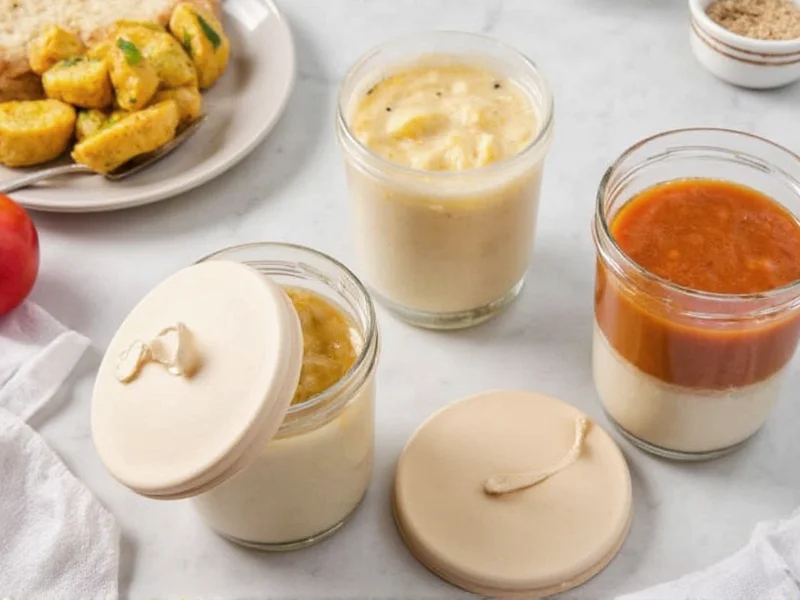Proper soup storage prevents spoilage, maintains flavor, and ensures food safety. When selecting containers, prioritize features that address soup's unique properties: high liquid content, temperature fluctuations during storage, and potential for flavor transfer. The right containers transform homemade soup from a single meal into multiple convenient servings.
Essential Features of Quality Soup Storage Containers
Soup presents specific storage challenges that require specialized containers. Unlike solid foods, soup's liquid nature demands absolute leak-proof construction. The thermal shock from hot-to-cold transitions requires materials that won't crack. Consider these critical features when evaluating options:
| Feature | Why It Matters | Recommended Specification |
|---|---|---|
| Airtight Seal | Prevents flavor transfer and oxidation | Locking lid mechanism with silicone gasket |
| Freezer-Safe Construction | Avoids cracking during temperature changes | Tempered glass or thick-walled plastic |
| Stackability | Maximizes refrigerator/freezer space | Uniform shape with non-slip bases |
| Portion Control | Enables single-serving convenience | 8-16 oz capacity options |
| Material Safety | Prevents chemical leaching into food | BPA-free plastic or non-reactive glass |
Material Comparison: Glass vs. Plastic vs. Stainless Steel
Each material offers distinct advantages for soup storage. Your choice depends on primary usage patterns and storage conditions.
Tempered Glass Containers
Professional kitchens and serious home cooks often prefer glass containers for soup storage. Borosilicate or tempered soda-lime glass withstands extreme temperature changes from boiling to freezing without cracking. Glass doesn't absorb flavors or odors, maintains clarity after repeated use, and contains no chemicals that could leach into acidic soups. Look for containers with reinforced corners and thick walls for maximum durability. The primary drawback is weight and potential breakage if dropped.
BPA-Free Plastic Containers
High-quality plastic containers offer lightweight convenience and shatter resistance. Premium options use Tritan or similar copolyesters that resist staining from tomato-based soups. Ensure containers explicitly state "BPA-free" and "microwave-safe" as lower-quality plastics may warp or release chemicals when exposed to hot soup. Choose opaque containers to prevent light degradation of nutrients in stored soup. Plastic containers generally provide better insulation than glass during refrigeration.
Stainless Steel Containers
While less common for home soup storage, stainless steel containers excel in commercial settings. They offer exceptional durability and temperature retention but require careful handling as they can't go directly from freezer to microwave. Stainless steel doesn't react with acidic ingredients but doesn't allow visual content inspection without opening. Best for workplace meal prep where containers won't undergo frequent temperature cycling.
Food Safety Guidelines for Soup Storage
Even the best soup storage containers can't compensate for improper handling. Follow these evidence-based food safety practices:
- Cool soup rapidly before storage - reduce from boiling to 70°F within 2 hours
- Leave 1-inch headspace in containers for liquid expansion during freezing
- Label containers with contents and date using freezer-safe markers
- Store at consistent temperatures: 40°F or below for refrigeration, 0°F for freezing
- Thaw frozen soup in refrigerator, not at room temperature
The USDA recommends consuming refrigerated soup within 3-4 days and frozen soup within 2-3 months for optimal quality, though properly stored soup remains safe beyond these periods. Always reheat soup to 165°F minimum before consumption.
Optimizing Container Design for Soup Specifics
Not all food storage containers work equally well for liquid-based foods. Soup-specific design elements make a significant difference in usability and food preservation:
Lid Engineering Matters Most
Standard snap lids often fail with liquid contents. Look for containers with:
- Multi-point locking systems (4-8 closure points)
- Integrated silicone gaskets that create a vacuum seal
- Venting mechanisms for safe microwave reheating
- Lids that remain attached during pouring
Shape Considerations
Square or rectangular containers maximize space efficiency in refrigerators and freezers compared to round options. Flat lids enable stable stacking without shifting. Containers with wide mouths facilitate easy filling and cleaning, while tapered designs help with single-handed pouring.
Practical Storage Techniques
Implement these professional techniques to extend soup freshness and simplify meal preparation:
- Batch Cooling: Divide large soup quantities into smaller containers (2-4 cups) before refrigeration to accelerate cooling
- Layering Method: For layered soups like stews, store components separately (broth, solids) and combine during reheating
- Freezer Layout: Arrange containers vertically in freezer bins rather than stacking horizontally for easier access
- Vacuum Enhancement: For extended freezer storage, place containers inside vacuum-sealed bags as additional protection
Avoiding Common Soup Storage Mistakes
Even experienced cooks make these preventable errors that compromise soup quality:
- Storing hot soup directly in containers (causes condensation and temperature fluctuations)
- Overfilling containers without adequate headspace for expansion
- Using containers with inadequate seals that leak in refrigerator
- Storing soup in original cooking pots (metal can react with acidic ingredients)
- Ignoring container material limitations (e.g., putting plastic in oven)
Remember that container quality directly impacts food safety. Damaged containers with cracks, warping, or degraded seals should be replaced immediately, as they harbor bacteria and compromise the storage environment.
Organizing Your Soup Storage System
Create an efficient soup storage workflow with these organizational strategies:
- Designate specific freezer sections for different soup types (vegetable, meat-based, creamy)
- Use color-coded lids to indicate meal type or dietary restrictions
- Implement a "first in, first out" system with dated labels
- Keep a master list of frozen soups with dates and ingredients
- Store containers vertically in bins for easy visibility and access
Investing time in proper organization pays dividends when you need a quick meal. Well-organized soup storage transforms meal planning from stressful to seamless, making healthy homemade options readily available.











 浙公网安备
33010002000092号
浙公网安备
33010002000092号 浙B2-20120091-4
浙B2-20120091-4